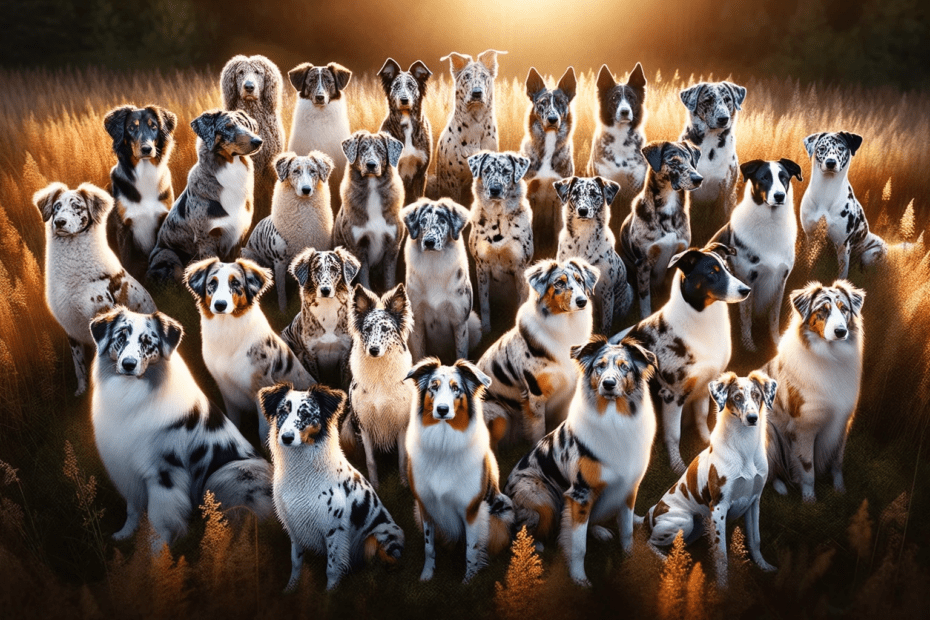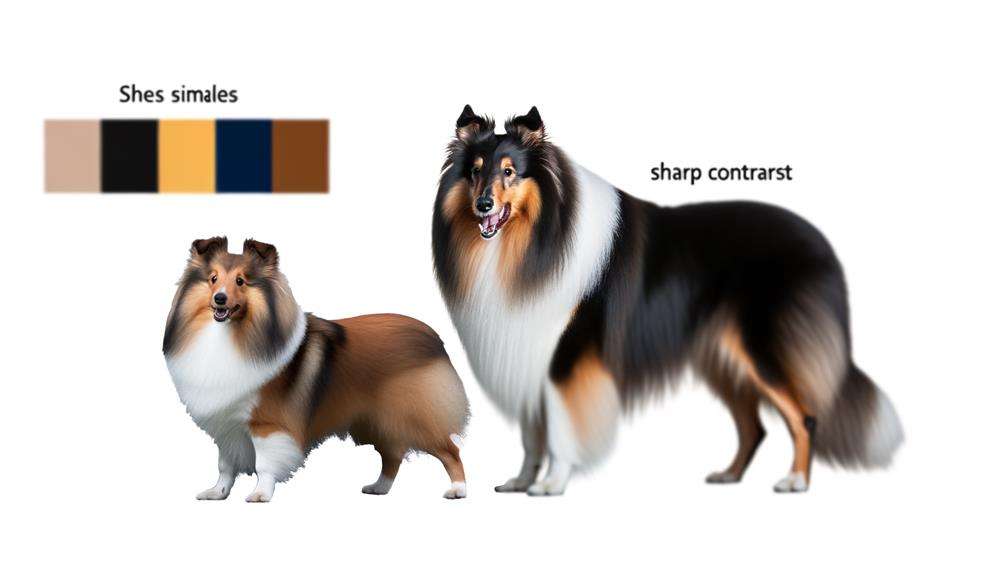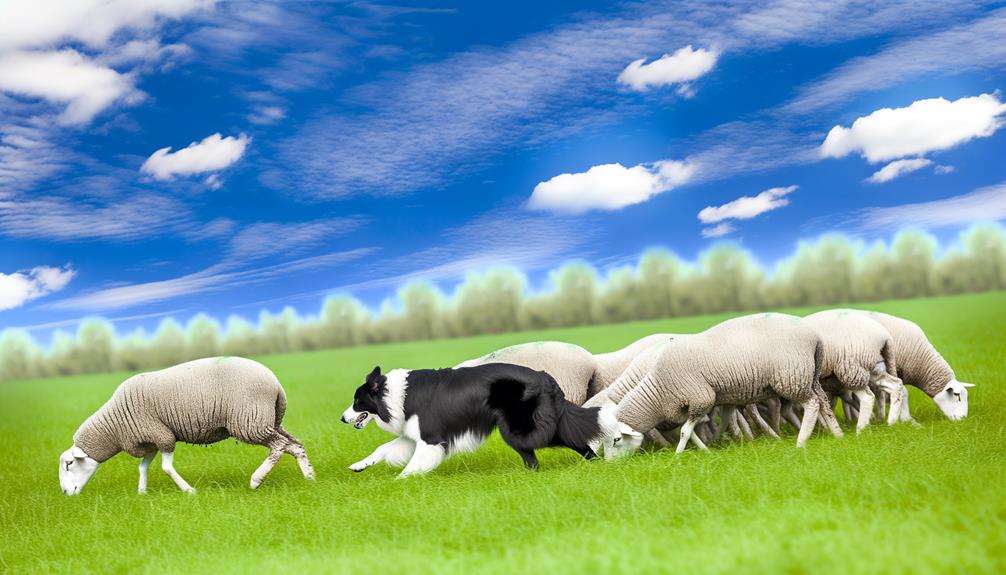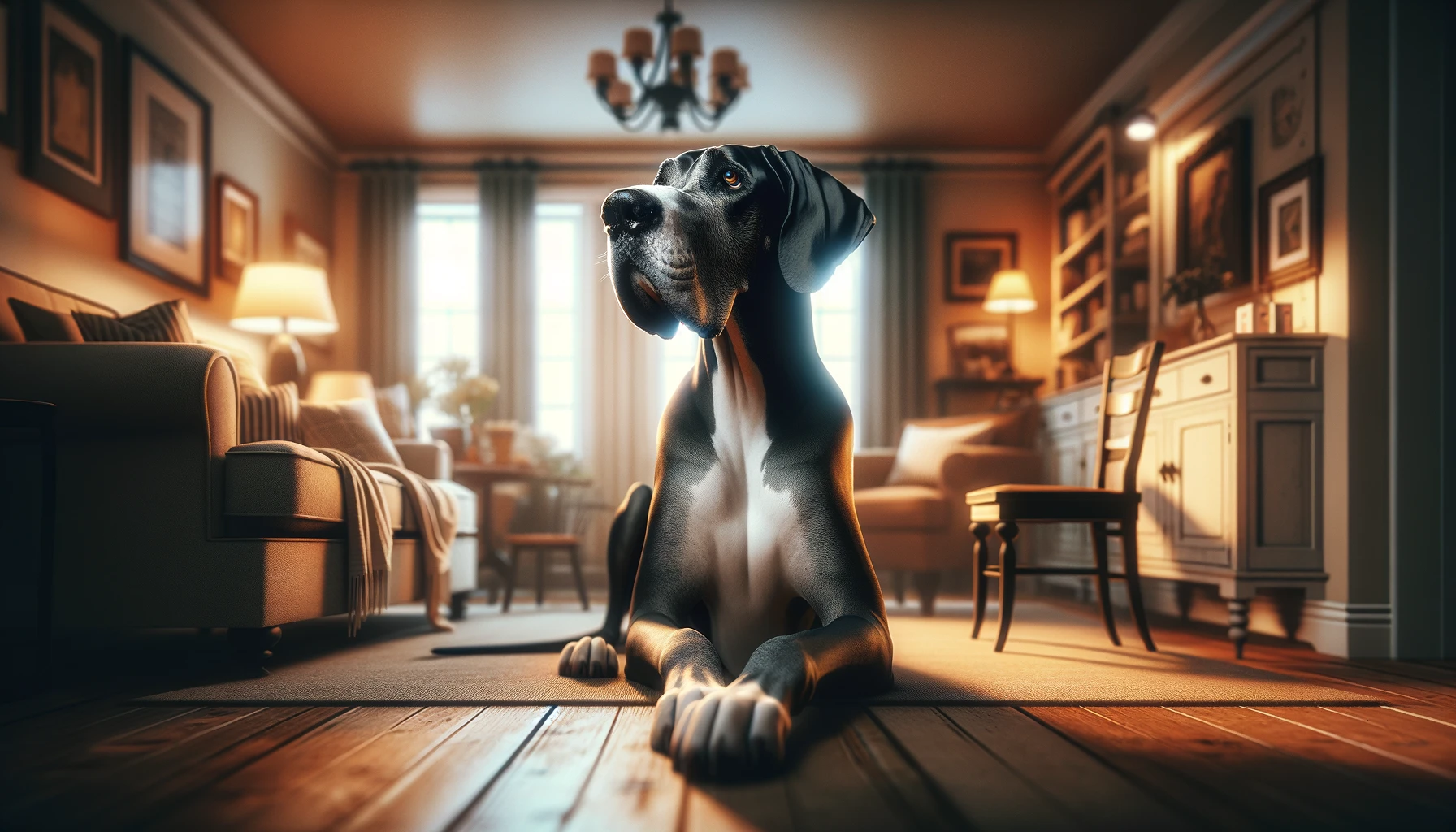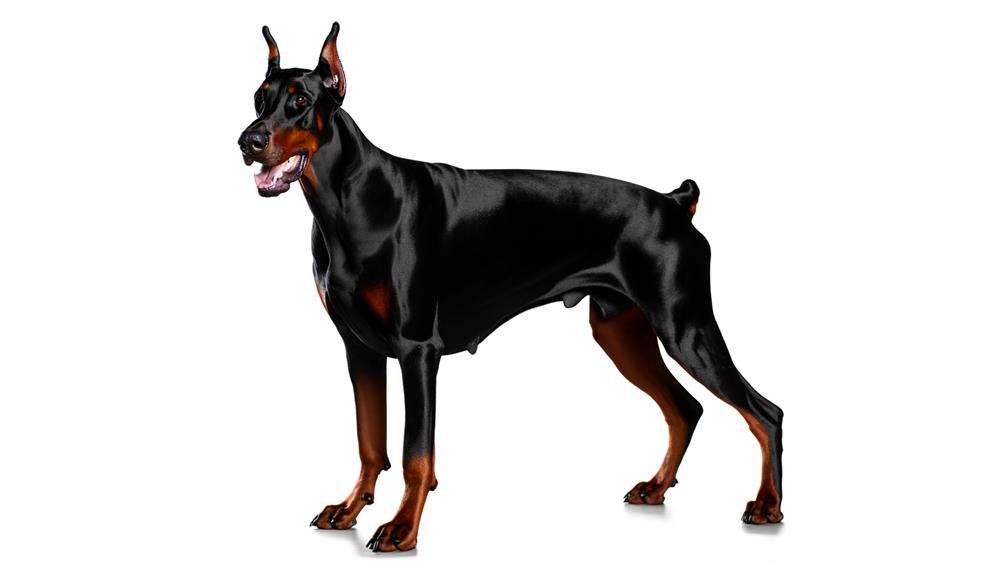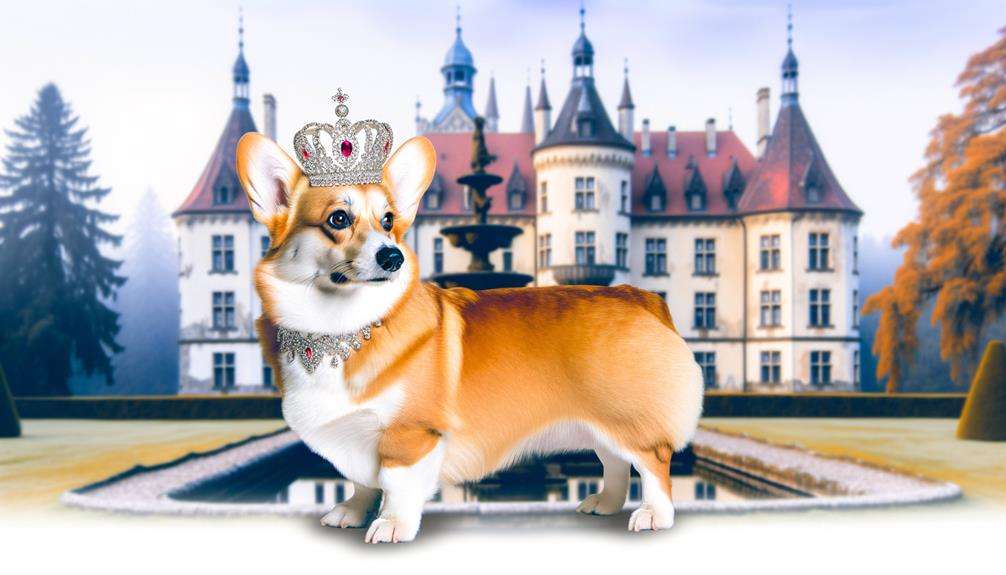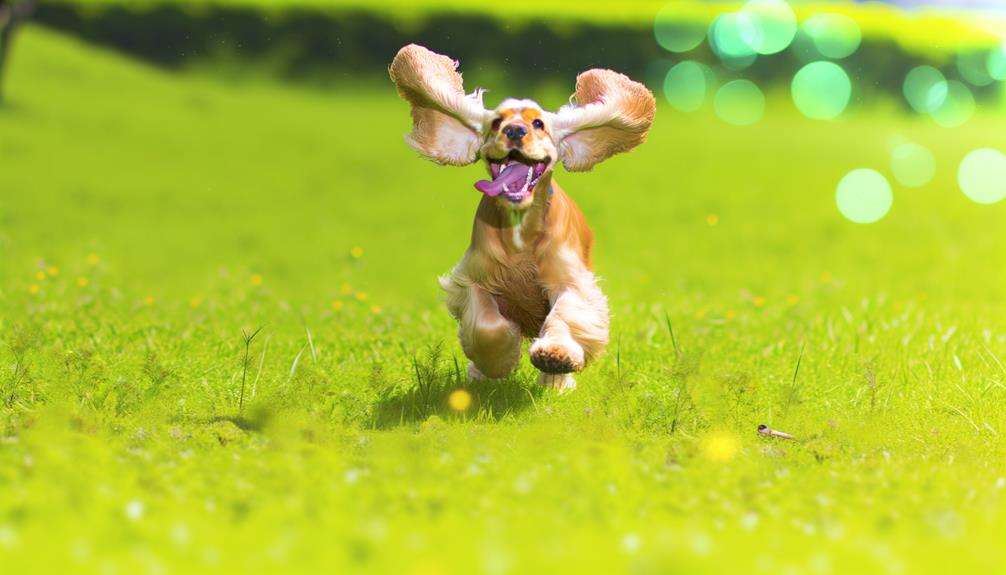Are you ready to delve into the fascinating world of rare dog coat patterns?
In this article, we will guide you through the art of mastering these unique and captivating designs.
From the stunning silky coat of the Afghan Hound to the iconic spotted pattern of the Dalmatian, we will explore a range of breeds that boast exquisite multi-color mixes, striking merle markings, distinctive brindle stripes, and even a unique sable shade.
Get ready to discover the beauty and complexity of rare dog coat patterns.
Key Takeaways
- Breeding for distinctive coat patterns requires careful selection and understanding of inheritance patterns.
- Regular grooming, including brushing and bathing, is essential for maintaining the coat of rare dog coat patterns.
- Merle-colored Border Collies are more prone to health concerns such as deafness and eye abnormalities.
- Breeders and owners should be aware of health risks and take necessary precautions for the well-being of rare dog coat patterns.
Afghan Hound: Stunning Silky Coat
When grooming an Afghan Hound, you'll be amazed by the stunning silky coat. The Afghan Hound is known for its luxurious, flowing hair that drapes gracefully over its body. To maintain the beauty of this coat, proper afghan hound coat care is essential. Regular grooming is necessary to keep the coat clean, tangle-free, and healthy.
Start by brushing your Afghan Hound's coat daily using a slicker brush or a pin brush. This will help remove any loose hairs and prevent matting. Be gentle when brushing to avoid causing discomfort to your dog. Pay special attention to the mane, tail, and feathering on the legs, as these areas are prone to tangling.
Bathing an Afghan Hound should be done once every two to three weeks. Use a mild shampoo specifically formulated for dogs with long and silky coats. After bathing, make sure to thoroughly rinse the coat to remove any residue. Towel dry the dog and then use a blow dryer on a low setting to finish drying the coat. Avoid using high heat as it can damage the hair.
Trimming the coat is necessary to maintain its shape and prevent it from dragging on the ground. Regularly trim the hair around the paws and sanitary areas to keep them clean and free from matting.
Dalmatian: Iconic Spotted Pattern
To understand the iconic spotted pattern of the Dalmatian, it's important to explore the unique coat genetics of this breed.
Dalmatians are known for their distinct spots, which are a result of a specific genetic mutation.
Breeding for these distinctive spots requires careful selection of individuals with the desired coat pattern, ensuring that the next generation will continue to showcase the iconic Dalmatian look.
Unique Dalmatian Coat Genetics
You can uncover the fascinating genetics behind the unique Dalmatian coat pattern, famous for its iconic spots.
The evolution of the Dalmatian coat can be traced back to a genetic mutation that occurred in the breed. Unlike other dog breeds that have a variety of coat patterns, Dalmatians are exclusively known for their white coat with black or liver spots.
This distinctive pattern is a result of a mutation in the MC1R gene, which is responsible for pigmentation in mammals. This mutation affects the production of melanin, the pigment that gives color to hair and skin.
In Dalmatians, the mutation causes the absence of melanin in certain areas, resulting in the formation of spots. The precise mechanisms behind this mutation are still being studied, but it's clear that the unique Dalmatian coat genetics contribute to their striking appearance.
Breeding for Distinctive Spots
To achieve the distinctive spotted pattern of a Dalmatian, you should carefully select and breed dogs with the desired coat genetics. Breeding for the iconic spots involves understanding the inheritance patterns and considering the risks associated with inbreeding.
Here are four key factors to consider when breeding for the Dalmatian's spotted pattern:
- Coat Texture: The quality and texture of the coat play a crucial role in the appearance of the spots. Breeding for a smooth and glossy coat can enhance the visibility of the spots, giving the Dalmatian its unique charm.
- Spot Size and Shape: The size and shape of the spots can vary greatly. Breeding for well-defined, evenly distributed spots can help create that classic Dalmatian look.
- Spot Coloration: The spots can be black or liver-colored. Breeding for consistent and vibrant spot coloration can add to the overall appeal of the Dalmatian's coat.
- Spot Density: The density of the spots can range from light to heavy. Breeding for a balance between the density of spots and the base coat color can result in a visually striking pattern.
Shih Tzu: Exquisite Multi-color Mix
When breeding Shih Tzus, it's important to carefully select and combine different colors to achieve their exquisite multi-color mix. The Shih Tzu breed is known for its luxurious, flowing coat, which can come in a variety of colors and patterns. The multi-color mix is a result of breeding Shih Tzus with different color genetics. These genetics can be quite complex, and breeders must have a thorough understanding of color inheritance in order to produce the desired multi-color mix.
To achieve the multi-color mix, breeders often select Shih Tzus with different coat colors and patterns. They may choose a Shih Tzu with a solid coat color, such as black or white, and breed it with a Shih Tzu with a parti-color coat, which has two or more distinct colors. This breeding can produce puppies with a beautiful blend of colors, creating the multi-color mix that's highly sought after in the breed.
In addition to selecting the right breeding pairs, grooming is also essential in maintaining the Shih Tzu's exquisite multi-color coat. Regular brushing and bathing are necessary to keep the coat clean, tangle-free, and looking its best. Professional grooming may be required to achieve the desired look, as the Shih Tzu's coat requires special care and attention.
The Shih Tzu breed has a rich history dating back to ancient China. They were highly regarded by Chinese royalty and were often given as gifts to foreign dignitaries. The breed's distinctive appearance and luxurious coat have made them popular companions and show dogs worldwide.
Border Collie: Striking Merle Markings
Let's delve into the fascinating world of Border Collie coat patterns and specifically, their striking merle markings.
Understanding the inheritance of the merle gene is crucial in comprehending the unique color variations seen in these dogs.
However, it's important to be aware of the potential health concerns associated with merles, such as hearing and vision impairments.
Merle Gene Inheritance
You can understand the striking merle markings of Border Collies by studying the inheritance of the merle gene. The merle gene expression plays a crucial role in determining the unique coat patterns seen in these dogs.
Here is a breakdown of how the merle gene is inherited:
- Dominant Trait: The merle gene is dominant, meaning that even if a dog carries just one copy of the gene, it will have merle markings.
- Dilution Effect: The merle gene dilutes the base coat color, resulting in a mottled appearance with patches of lighter and darker shades.
- Random Patterning: The merle gene causes random patterns of pigmentation, creating a mesmerizing and unpredictable coat design.
- Eye Color Variation: In addition to coat patterns, the merle gene can also affect eye color, leading to striking combinations like one blue and one brown eye.
Understanding the inheritance of the merle gene helps unravel the mystery behind the captivating merle coat patterns in Border Collies.
Health Concerns in Merles
Continuing with the discussion on the merle gene inheritance, it's important to address the health concerns associated with the striking merle markings in Border Collies.
The genetics of the merle coat pattern can lead to various health risks for these dogs. One of the major concerns is deafness, which is more common in merle-colored Border Collies compared to those with other coat patterns. The merle gene can affect the development of the inner ear, resulting in partial or complete hearing loss.
Additionally, merle dogs are more prone to eye abnormalities such as coloboma, which is a malformation of the iris. This can cause vision impairment or even blindness.
It's crucial for breeders and owners to be aware of these health risks and take necessary precautions to ensure the well-being of merle Border Collies.
Unique Color Variations
When exploring the unique color variations of Border Collies, one can't overlook the striking merle markings. These distinctive coat patterns are the result of careful breeding for rare coat patterns and the genetics of unique colors. Here are four characteristics of Border Collies with merle markings that make them truly stand out:
- Irregular patches: Merle Border Collies display irregular patches of color throughout their coat, creating a beautiful mosaic effect.
- Speckled appearance: The base color of a merle Border Collie is interspersed with specks and flecks of a lighter or darker shade, giving them a unique and eye-catching appearance.
- Marbled coloring: The merle gene causes the colors to blend and swirl together, resulting in a marbled effect that adds depth and complexity to the dog's coat.
- Striking contrast: The merle markings often create a striking contrast between the base color and the patches, making them visually striking and captivating.
Breeding for these rare coat patterns and understanding the genetics behind the unique colors in Border Collies allows breeders to produce dogs with truly remarkable and beautiful markings.
Bull Terrier: Distinctive Brindle Stripes
The Bull Terrier showcases distinct brindle stripes on its coat. These stripes are a result of specific bull terrier genetics and are considered a unique brindle coat variation. Brindle is a term used to describe a coat pattern characterized by a base color with darker contrasting stripes. In the case of the Bull Terrier, the base color is often white, and the brindle stripes can vary in intensity and width.
The brindle coat pattern in Bull Terriers is determined by genetic factors. It's believed to be caused by a combination of genes that affect pigment production and distribution. The exact mechanism behind the brindle pattern isn't yet fully understood, but it's thought to involve a gene called K locus, which is responsible for the black coloration.
The brindle stripes on a Bull Terrier's coat can vary in appearance. Some may have thin and evenly spaced stripes, while others may have thicker and more irregular ones. The color of the stripes can also vary, ranging from dark brown to black. These distinct brindle stripes give the Bull Terrier a unique and eye-catching appearance.
Pembroke Welsh Corgi: Unique Sable Shade
To explore the unique sable shade of the Pembroke Welsh Corgi's coat, let's delve into the fascinating world of rare dog coat patterns. The Pembroke Welsh Corgi is known for its distinct coat coloration, and the sable shade is one of its most striking variations. Here are four key aspects to understand about the Pembroke Welsh Corgi's unique sable shade:
- Color Intensity: The sable shade in Pembroke Welsh Corgis can range from a rich, deep hue to a lighter, more subtle tone. This variation adds depth and dimension to their coat, creating a visually stunning appearance.
- Coat Shedding: Like all dogs, Pembroke Welsh Corgis shed their fur. However, the sable shade can help disguise the shedding process, making it less noticeable on furniture and clothing. Regular grooming and brushing can help manage shedding and keep the coat looking its best.
- Grooming Techniques: Maintaining the Pembroke Welsh Corgi's sable coat requires regular grooming. Brushing their fur helps remove loose hair and prevent matting. Additionally, occasional baths are necessary to keep the coat clean and healthy.
- Coat Care: To enhance the sable shade and promote overall coat health, it's important to provide proper nutrition and regular exercise. A balanced diet with essential nutrients supports the growth of a lustrous coat, while physical activity helps maintain a healthy skin and coat.
Understanding the unique sable shade of the Pembroke Welsh Corgi's coat allows owners to appreciate the beauty of this rare dog coat pattern. By implementing appropriate grooming techniques and maintaining a healthy lifestyle, you can help your Corgi showcase its stunning sable shade.
Frequently Asked Questions
Are There Any Health Concerns or Genetic Conditions Associated With Specific Rare Coat Patterns in Dogs?
There can be health concerns and genetic conditions linked to specific rare coat patterns in dogs. It is important to understand the potential risks associated with these patterns and consult with a veterinarian for guidance and care.
How Do Rare Coat Patterns Affect a Dog's Temperament or Behavior?
Rare coat patterns can impact a dog's temperament or behavior. Certain patterns, like merle or piebald, are associated with increased risk of deafness or vision problems. Understanding these effects is crucial for effective dog training.
Can Rare Coat Patterns Be Intentionally Bred or Are They Purely a Result of Chance?
Rare coat patterns can be intentionally bred using specific breeding strategies. Genetic testing can help identify dogs with the desired patterns. However, chance still plays a role in the outcome, so careful planning and selection are necessary.
Are Certain Rare Coat Patterns More Desirable or Sought After in Certain Dog Breeds?
Certain rare coat patterns can be more desirable in certain dog breeds, influencing their popularity. Understanding the preferences of each breed and the impact of these patterns is essential in mastering the art of rare dog coat patterns.
Are There Any Specific Grooming or Maintenance Requirements for Dogs With Rare Coat Patterns?
To properly care for a dog with a rare coat pattern, you must be aware of their specific grooming requirements and maintenance needs. Regular brushing, occasional trimming, and proper hygiene practices are essential for keeping their coat healthy and looking its best.
Conclusion
In conclusion, mastering the art of rare dog coat patterns requires an understanding of the unique characteristics and genetics that contribute to each design.
From the stunning silky coat of the Afghan Hound to the iconic spotted pattern of the Dalmatian, each breed showcases its distinctive beauty.
The exquisite multi-color mix of the Shih Tzu, striking merle markings of the Border Collie, distinctive brindle stripes of the Bull Terrier, and unique sable shade of the Pembroke Welsh Corgi all add to the diversity and charm of these rare coat patterns.
